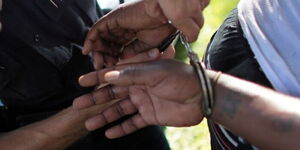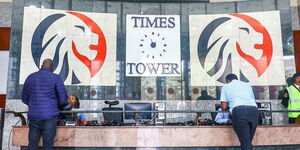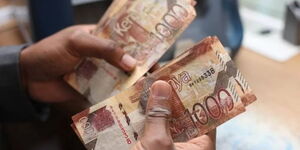Nairobi Governor Johnson Sakaja has outlined how his County Government is tracking pupils studying within the capital to ensure they all benefit from the Dishi na County school feeding program.
Speaking during the Ministerial Meeting on the Global School Meals Coalition, Nairobi on Tuesday 29, the Governor revealed that his county tracks the students through the Dishi na County smartwatches.
According to the governor, the Dishi na County model is designed to be accessible to all students where all parents pay a nominal fee of Ksh 5 facilitated through a Tap2Eat payment system embedded in a digital Near Field Communication (NFC) watch.
Through this watch, the County Government harnesses technology and data to make sure all the pupils in Nairobi schools are well-fed. According to the Governor, the watches were innovated in Kenya, by young people.
"If you go around Nairobi you will see all our children wearing these watches. Nairobi is a Silicon Savanna, so being a hub of innovation our young people are the ones who innovated this," Sakaja said.
According to the Governor, apart from telling who ate and who did not, the watch also tells which child skipped school, and how often they attended school.
Lauding the technology, the governor said that it has helped curb food wastage as the data from these devices helps gauge just the right amount of food to prepare.
The Governor went on to reveal that the children love the watches because according to him it gives them identity.
"It's more than that, the children refuse to remove these watches when they go home because it has given them identity, they feel loved, seen, and heard. It gives them dignity."
"No child is pulled out of the school line in case the wallet doesn't have that Ksh 5, we take note of it, and we pay for it," Sakaja said.
The watches were developed by the Kenyan social enterprise Food for Education for the Tap2Eat NFC cash replacement system. To pay for a meal, students use a Tap2Eat NFC wristband which is linked to their parents’ account.
The students tap the wristband watch on an NFC reader, which debits the cost of the meal and sends a notification to their parents letting them know they have eaten. The whole process takes less than five seconds.
Sakaja was welcoming World Food Program leaders who were meeting President Ruto to engage on various issues including provision of nutritious meals for school-going children in Kenya.
The president has reiterated the importance of feeding students who are the future of the nation.
"To address this, we have tripled the budgetary allocation for school feeding and set a clear goal: to expand the program’s coverage from 2.6 million to 10 million children by 2030," Ruto noted.












